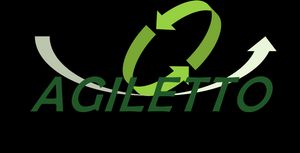The Elephant and the Roadmap: How to Make Agile Planning Practical and Real
If the elephant’s vision is to swim in the water far away, the roadmap is the map through the jungle. It doesn't show every detail, but it gives direction, identifies key milestones, and reminds us why we’re walking in the first place. Without it, the elephant may survive—maybe even thrive—but likely by accident, not design.
In a previous article, we busted the myth that Agile means “no long-term planning.” That belief is not only false—it’s damaging. Agile teams absolutely need direction. They need to understand where they’re going, why it matters, and how today’s steps connect to the bigger journey.
This article is about how to create that direction—practically, clearly, and adaptively—through roadmaps. But before we dive into tools and techniques, we need to clear up a common source of confusion: the difference between vision, mission, strategy, tactics, and where roadmaps actually fit. So, let's do it!

Untangling the Strategic Web: Vision, Mission, Strategy, Tactics—and Roadmaps
Modern organizations often fall into a trap: they separate long-term thinking from short-term doing. Leadership drafts a five-year vision and mission. Meanwhile, teams operate tactically, grinding through backlogs. The result? A gulf between aspiration and execution.
To close that gap, we need to understand how these elements connect:
Vision: The desired end state. This is your north star—the compelling picture of the future you're trying to create.
In our analogy: the elephant’s vision is to swim in the water, far, far away.Mission: The organization’s purpose—why it exists and what it seeks to contribute to the world. It anchors the vision in values and meaning.
Strategy: The high-level plan to realize the mission and move toward the vision. It sets direction and priority.
For the elephant, strategy is choosing a path through the jungle—avoiding swamps, following rivers, and reaching water efficiently.Tactics: The specific, short-term actions that implement the strategy.
For the elephant, this might be moving around a fallen tree, swatting flies, or pausing to drink along the way.
A roadmap, then, is not the vision, strategy, or tactics—but the scaffold that connects them. It translates vision and strategy into a navigable sequence of outcomes. It allows us to plan ahead without locking us in. A roadmap should:
- Reflect the strategic path toward the vision
- Offer tactical clarity on what’s next (without dictating how)
- Remain flexible, so teams can adapt as they learn
In short: a roadmap keeps everyone walking in the same direction, even if the terrain changes underfoot.
Why Agile Organizations Need Real Roadmaps—Not Feature Lists
Too many product roadmaps are little more than backlogs with due dates. They list features instead of outcomes. They promise dates instead of creating direction. In doing so, they turn teams into feature factories—churning out delivery after delivery with no clear link to impact.
Modern, agile companies need to leave this mindset behind.
Instead of asking, "What features will we ship?", they should ask,
"What problems will we solve?"
"What outcomes do we seek?"
"How will we know we’re making progress?"
This shift—from outputs to outcomes, from prediction to adaptation—is where Agile truly thrives. Roadmaps, when built well, support this shift. They allow for long-term thinking without killing short-term agility. They make space for experimentation, learning, and customer value.
And the good news? It’s not complicated. It just requires a change in mindset—and a few practical techniques.
That’s what the rest of this article is about: hands-on tips to create agile roadmaps that teams can actually use. These are simple, actionable steps that help align vision, empower autonomy, and keep your elephant on the path to water—even if the jungle changes tomorrow.
Ready? Let’s get practical.
Seven Practical Tips for Creating Agile Roadmaps That Actually Work
So how do we move from theory to something real? Below are seven hands-on tips that I’ve seen work across teams, companies, and even in messy, complex environments. They're not fancy. But they work.
Whether you’re a product owner, team lead, or coach, use these to bring clarity, direction, and agility into your roadmap—without turning it into a feature factory.
1. Start with a Tangible Vision—Even if It’s a Bit Fuzzy
You don’t need a corporate slogan carved in stone. But you do need direction. Paint a picture of where you're heading—even if it’s a little rough.
Try this:
Ask your team:
“If we’re wildly successful a year from now, what does that look like—for our users, for the business, and for us?”
That answer becomes your north star. Put it where everyone can see it. Update it when needed. That’s not a failure—that’s learning.
2. Shift from Features to Outcomes
Old-school roadmaps list features like a shopping list. But we’re not building for the sake of building—we’re solving problems.
Instead of:
“Add multi-language support.”
Try:
“Increase signup completion for international users.”
Try this:
Write roadmap items that answer:
“What outcome are we aiming for?”
“What problem are we solving—and why now?”
If you can’t answer that, maybe it shouldn’t be on the roadmap.
3. Use “Now / Next / Later” Instead of Fixed Dates
Most of us can’t predict exactly what we’ll do in six months. So let’s stop pretending. Instead, show priorities through sequence, not a locked calendar.
- Now: We’re doing this
- Next: Probably what’s up after
- Later: Ideas or goals that are still forming
Try this:
Set up a simple board or view—sticky notes, Miro, Jira, whatever you like. Keep it alive. Review it every sprint or so.
4. Plan in Rolling Waves, Not Concrete Blocks
We don’t need to plan everything in detail six months ahead. We need to know enough to move forward—and keep refining as we go.
- Short term: Committed and concrete
- Mid term: Directional
- Long term: Thematic and loose
Confidence fades over time—and that’s okay.
Try this:
Use colors or icons to signal your confidence. Don’t be afraid to say: “We think this is next, but we’ll know more in a few weeks.”
5. Mark the Real Deadlines (and Only Those)
Some dates really matter—product launches, legal requirements, big commitments. But most don’t. Don’t let soft guesses turn into hard promises.
Try this:
Mark hard deadlines clearly. Fix the date—but flex the scope. Let the rest of the roadmap breathe.
6. Connect Roadmap Items to Goals
If the roadmap isn’t tied to goals, it’s just a to-do list. Show how each item supports a bigger purpose—an OKR, KPI,user or business outcome.
Try this:
Add one line under each item:
“This supports our Q2 goal: Increase adoption by 15%.”
It helps with prioritization—and keeps you honest. If your current roadmap isn’t helping guide better decisions—or if it’s ignored entirely—it might be time to rethink what it’s for.
7. Make It Visible and Keep Talking About It
The roadmap shouldn't be a slide deck hidden in someone’s inbox. It should live where the team lives—and it should spark conversation.
Try this:
Put it on a dashboard, wiki, or Slack thread. Bring it into sprint reviews. Ask out loud:
“Are we still working on the right problems?”
You’ll be surprised what good comes from that one question.
...And Then a Few More (Because I Couldn’t Help Myself)
These next three aren’t part of the core list, but I find myself bringing them up almost every time I talk roadmaps. So here they are.
Bonus 1: Measure What Matters (Not Just What’s Easy)
If you measure velocity, teams will optimize for story points. If you measure outcomes, they’ll focus on results.
Try this:
Ask each team:
“How do you know if your work is making a difference?”
Then help them track that—and put it next to the roadmap.
Bonus 2: Treat Everything Like an Experiment
Most roadmap items are guesses. So treat them like experiments. Success is learning, not perfection.
Try this:
Add a hypothesis to each item:
“We believe this will reduce onboarding time by 30%.”
Then revisit after release. What happened? What did we learn?
Bonus 3: Don’t Make It Fancy—Make It Useful
Your roadmap doesn’t need to impress anyone. It needs to help your team make better decisions.
Try this:
If your roadmap isn't helping at least one person every week, simplify it. Ask your team:
“What would make this more helpful for you?”
Then adjust. It's a tool—not a trophy.
Final Thought: Direction Over Control
A roadmap isn’t a contract. It’s a conversation. A compass. A way to connect teams to purpose and possibility.
So don’t try to predict the future. Try to navigate it—together.
And when the elephant finally reaches the water, it won’t be because you had all the answers—it’ll be because you stayed focused, listened, learned, and kept moving forward.
Bonus-Bonus: Use PI Planning as Input to the Roadmap—Not a Commitment Contract
Let’s talk about the elephant in the room (pun intended): PI Planning. If you work in a SAFe® environment, you know the drill—those intense quarterly planning events. Done well, they create shared understanding, makes work visible, connects teams to outcomes and improves communication and cooperation. Done poorly, it becomes a disguised waterfall exercise planning for deadlines we must meet and features we must deliver.
Here’s the trick:
PI Planning is not where teams commit to how they’ll deliver specific features—or even what features they’ll deliver. It’s where they align on what outcomes they’ll pursue and why they matter.
Try this:
Ask teams to commit to a plan to achieve business value, not a plan to complete a backlog of features.
Next time: instead of using a backlog of features as input for PI Planning, bring in a list of business opportunities and customer challenges.
That way, the roadmap stays alive and adaptive. And PI Planning becomes a tool for learning, communication, and cooperation—not a ritual of pressure.
Related Reads
If this resonated with you, you might also like:
- Myth: Agile Means We Cannot Have Long-Term Plans
- Mistake #1: No Vision, No Victory
- Do We Really Need a Product Owner, or Can They Be Replaced by AI?
Final Final Thought
Roadmaps are an incredible tool—if they’re done right. But if they’re treated like a rigid long-term plan, they’re better off in the wastebasket.
Need help with your roadmap? Give me a ping—maybe we can work together.
Last updated May 27, 2025
